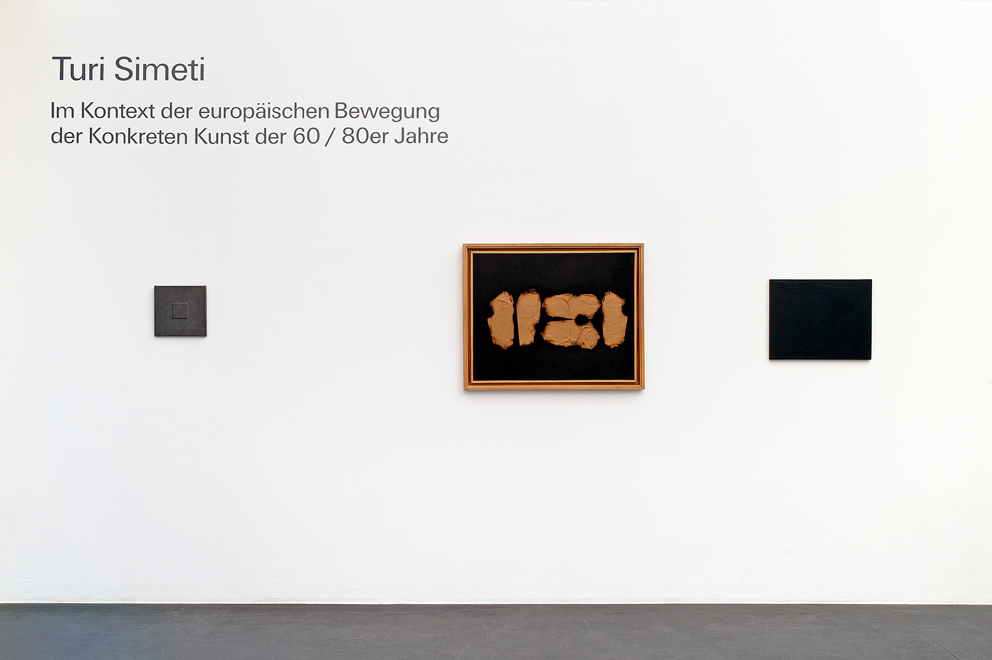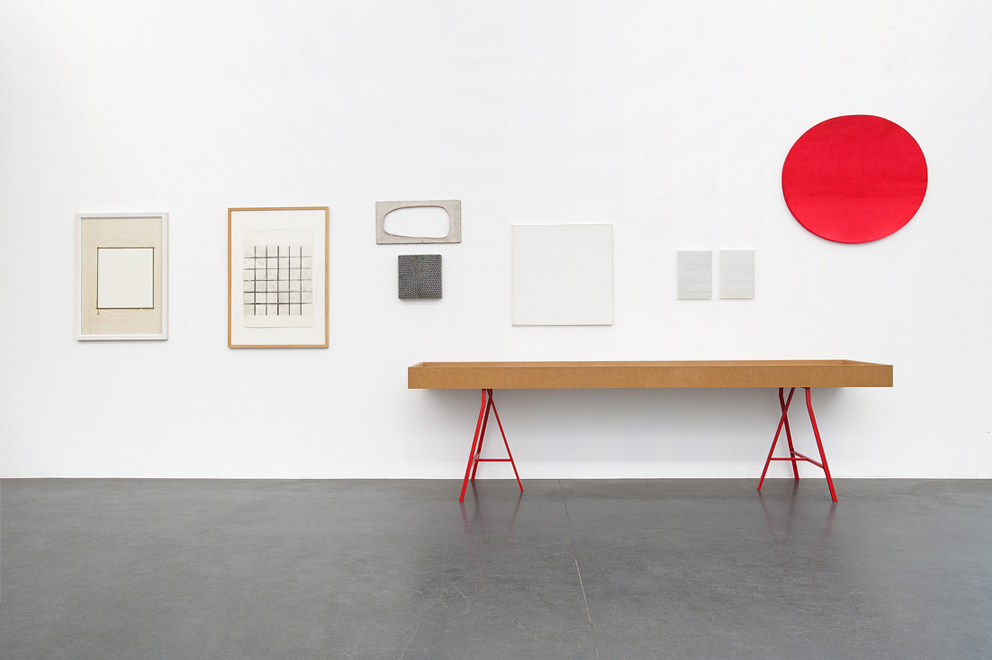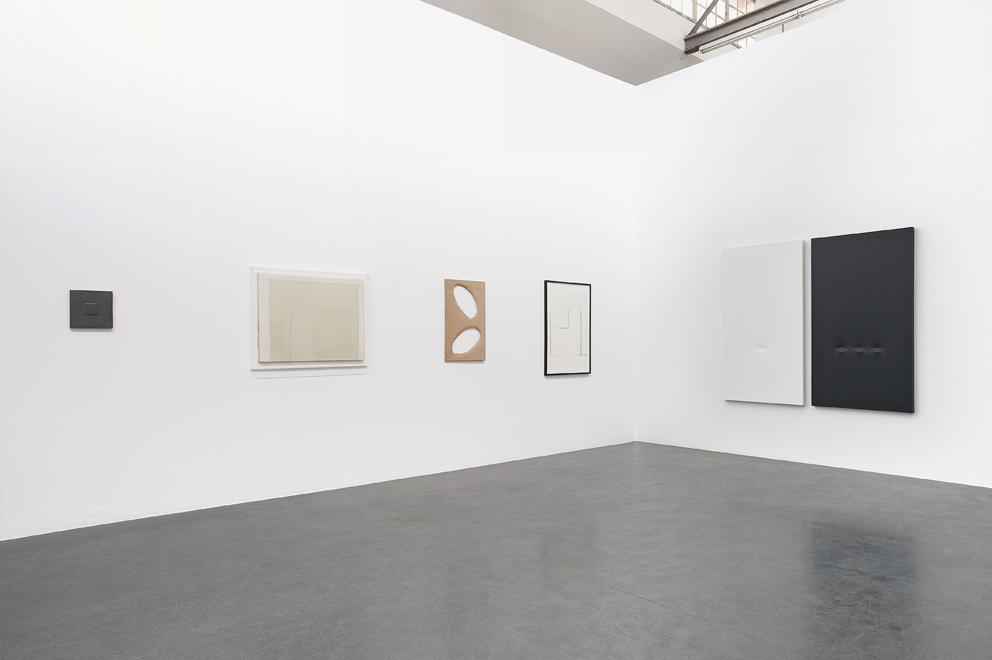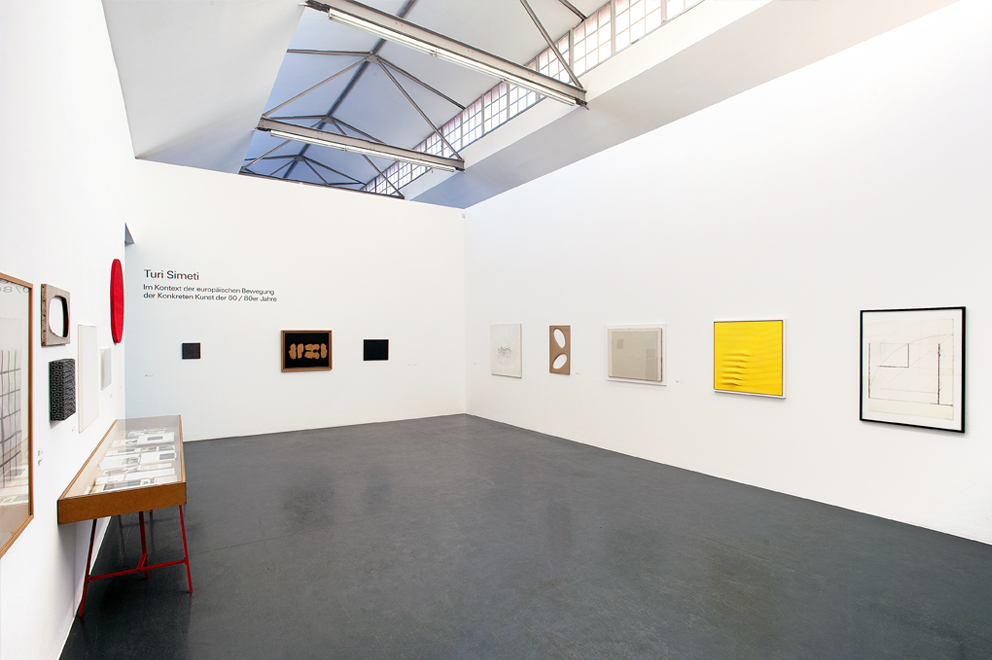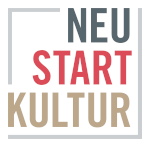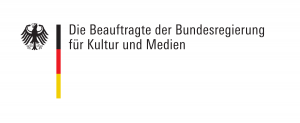Parallel to the solo exhibition, the gallery presents the group exhibition “Turi Simeti – In the Context of the European Concrete Art Movement of the 60s and 70s”, including works by Dadamaino, Stanislav Kolíbal, François Morellet and Günther Uecker.
–
Turi Simeti’s early work was created in the context of his encounters with Alberto Burri in Rome, who was already world famous in the 1950s. Burri reflected on the horrors of war in his pictorial reliefs and material collages using, among other things, burnt wood and plastic flags. From him Simeti took over his experiments in dealing with fire and cardboard. The singed parts shrank into amorphous forms. In these Simeti discovered the motif of the oval, which from then on accompanied and determined him in his artistic research.
In the mid-60’s Simeti opened his studio in Milan, established himself in the circle of artistssuch as Enrico Castellani,Agostini Bonalumi, Dadamaino, Piero Manzoni, Paolo Scheggi and others, and participated in the legendary exhibition ZERO Avantgarde 1965 in the studio of Lucio Fontana.
Dadamaino (1930 – 2004) was the grande dame of the Milan art scene around the Azimuth group, which since the mid1950s formed the Italian equivalent of ZERO in the Rhineland, the Nouvelles Realistes in Southern France, and the Dutch Gruppe NUL. In “Volumi,” created around 1958, Dadamaino cut circular or oval-shaped holes in the canvas. With her cut-outs she offers – unlike her great teacher Lucio Fontana – a view into immaterial emptiness.
Agostini Bonalumi (1935-2013) was one of the founders of the magazine and gallery Azimuth in 1958, together with Piero Manzoni and Enrico Castellani. Inspired by Lucio Fontana’s works, Agostino Bonalumi developed the group of works “Extroflexions”, monochrome canvases with tempera vinyl and modified stretchers, which model the surface of the work and create different filigree geometric reliefs.
At the historic event in 1965 at the Studio Lucio Fontana, Günther Uecker (b.1930) was also present from Germany, along with Hans Haacke, Adolf Luther, Heinz Mack, Otto Piene. In the course of his long and worldwide career, Uecker’s work was shown several times in Italy, such as his appearance in the German pavilion at the 35th Venice Biennale in 1970, in solo exhibitions in 1986 at Galleria Martano, Turin and Studio Leonardi, Genoa, in 1987 at Studio Carlo Grossetti, Milan, in 2004 „Zero. 1958-1968 tra Germania e Italia“, Palazzo delle Papesse, Siena, 2012 at Ca’Pesaro, Venice.
Ulrich Erben (b.1940) and Turi Simeti had their first solo exhibitions simultaneously in 1971 in Germany in the wellknown Galerie m of Alexander v. Berwordt-Wallrabe in Bochum, the institution for “New Concrete Art”. Both exhibitions subsequently had a 2nd stop at the Loehr Gallery in Frankfurt. To date, Simeti has had numerous exhibitions throughout Germany, just as Ulrich Erben found his second home in the Etruscan Bagnoregio and regularly presents his work in prominent Italian galleries.
Stanislav Kolíbal, born in 1925, has since the early 1950s created an sculptural and graphic oeuvre since the beginning of the 1950s. which, in its systematic reduction to simple structures and materials, occupies a strong conceptual position within the art movements of Minimal Art and Arte Povera. Simeti and I have met often over many years at art fairs and other art events, most recently at the vernissage of Stanislav Kolibal’s retrospective at the Czech Pavilion of the Venice Biennale in 2019. On this occasion we decided on the current exhibition at my gallery, which is now unfortunately the last show set up by Simeti himself.
With his singular work 1965/1-∞ Roman Opalka (1931-2011) belongs today to the most important personalities in the art world. In 1995 he celebrated a great success with his solo exhibition in the Polish Pavilion at the Venice Biennale. In 1985, I provided the first Opalka paintings in the Lenz Schönberg Collection, one of the most extensive private collections of Concrete Art from Europe with numerous works by Agostino Bonalumi, Enrico Castellani, Lucio Fontana, Piero Manzoni, François Morellet, Yves Klein, Roman Opalka, Stanislav Kolíbal, Günther Uecker and Turi Simeti, among others.
Rupprecht Geiger (1908-2009) was a co-founder of the artist group ZEN 49 in Munich in 1949 and an outstanding representative of non-objective art in Germany. He increasingly concentrated on the color red in his painting and predominantly chose the “pressed circle” as a pictorial form. Simeti and Geiger never met in person, but would certainly have had much to say to each other. For me the encounter of two protagonists, who were both on pictorial exploration of color and light closes the circle of this exhibition concept.
Text: Walter Storms
